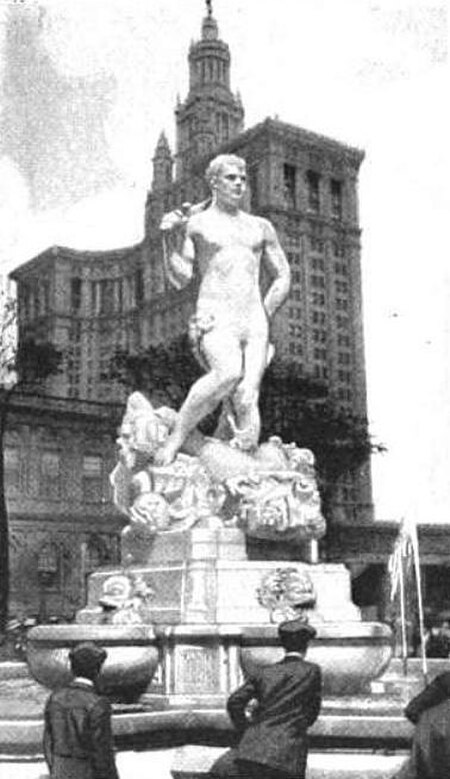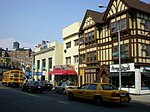Civic Virtue
1922 establishments in New York City1922 sculpturesAllegorical sculptures in New York CityCarrère and Hastings buildingsCemetery art ... and 12 more
Civic Center, ManhattanColossal statues in the United StatesFountains in New York CityHistory of Queens, New YorkMarble sculptures in New York CityNude sculptures in New York (state)Outdoor sculptures in New York CitySculptures by Frederick William MacMonniesSculptures carved by the Piccirilli BrothersSculptures of men in New York CitySculptures of women in New York CityStatues in New York City

Civic Virtue Triumphant Over Unrighteousness (1909–1922) is a sculpture group and fountain in New York City, created by sculptor Frederick William MacMonnies and architect Thomas Hastings, and carved by the Piccirilli Brothers. The fountain was originally placed in front of New York City Hall in Manhattan, spent almost 72 years beside Queens Borough Hall in Queens, and the sculpture group is now located in Green-Wood Cemetery in Brooklyn.
Excerpt from the Wikipedia article Civic Virtue (License: CC BY-SA 3.0, Authors, Images).Civic Virtue
Queens Boulevard, New York Queens
Geographical coordinates (GPS) Address Nearby Places Show on map
Geographical coordinates (GPS)
| Latitude | Longitude |
|---|---|
| N 40.714198 ° | E -73.829788 ° |
Address
Queens Boulevard & Union Turnpike
Queens Boulevard
11415 New York, Queens
New York, United States
Open on Google Maps









